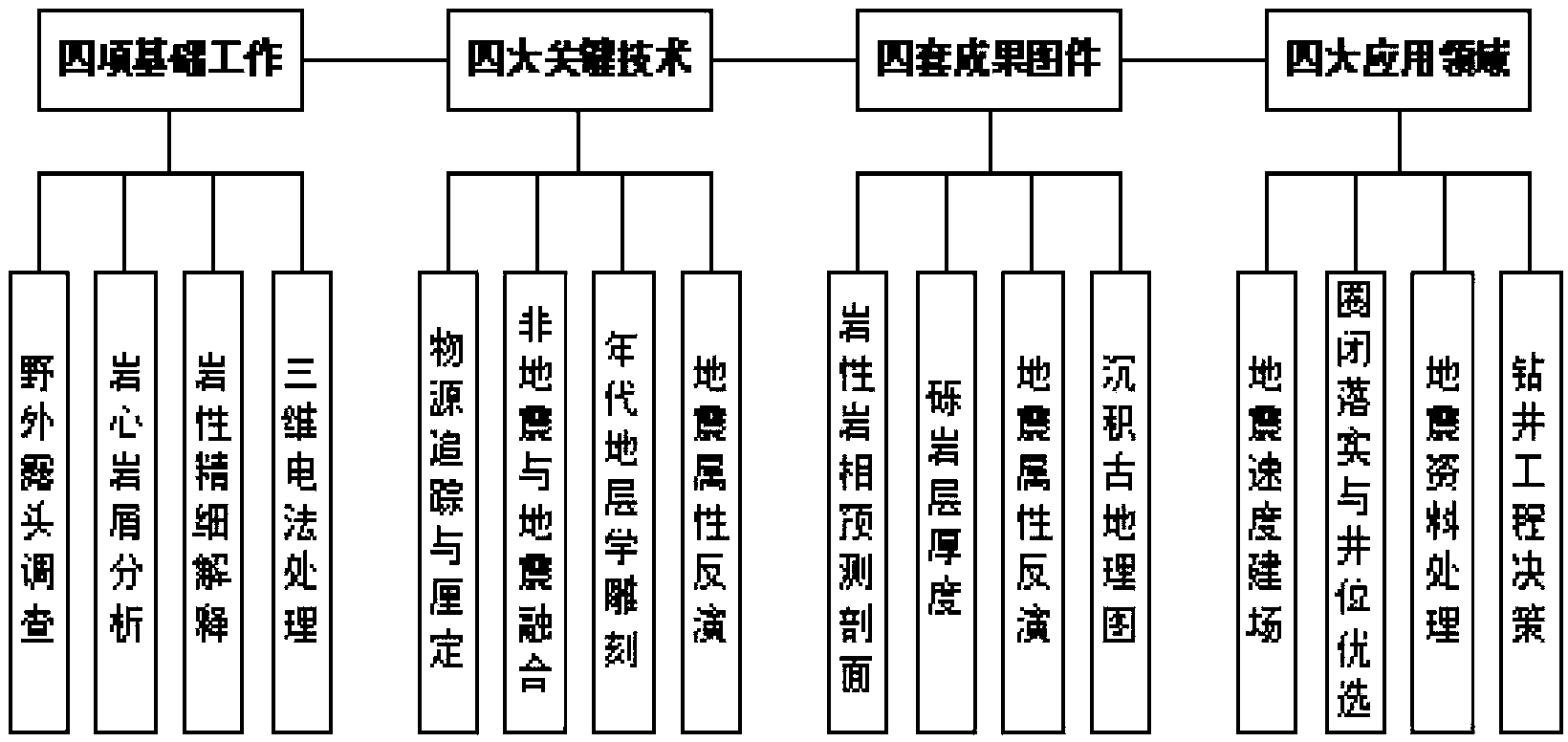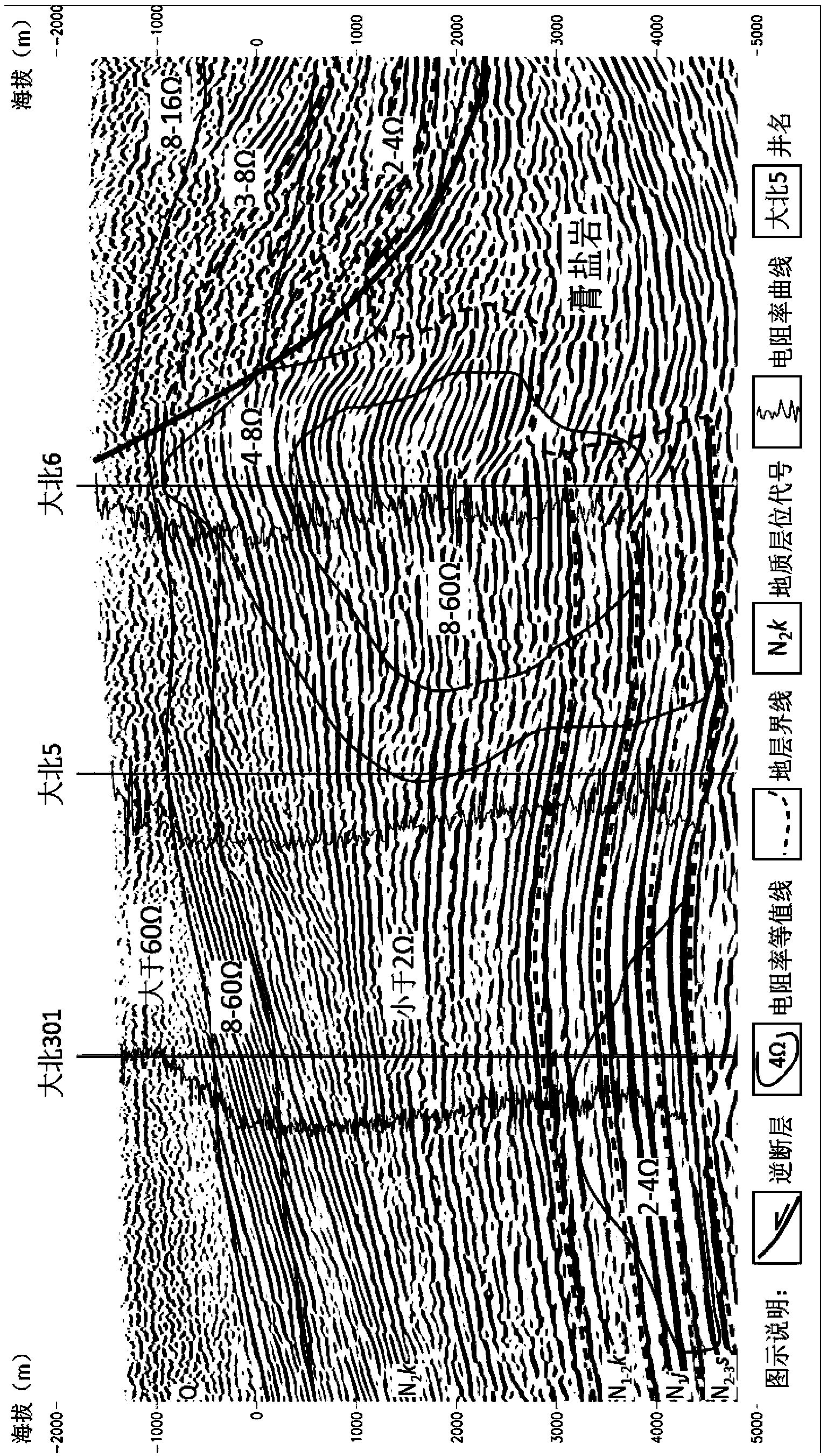Method for identification and prediction of fore-land basin extremely-thick conglomerate body
A technology for basins and rock masses, applied in the field of oil and natural gas exploration and development, can solve the problems of complex geological conditions, distortion of seismic velocity spectrum data, and difficulty in identifying shallow conglomerates, so as to improve the success rate of exploration wells, improve the implementation accuracy, and eliminate the speed. effect of traps
- Summary
- Abstract
- Description
- Claims
- Application Information
AI Technical Summary
Problems solved by technology
Method used
Image
Examples
Embodiment 1
[0033] Embodiment 1: as figure 1 , figure 2 , image 3 , Figure 4 , Figure 5 as shown,
[0034] Taking a method for identifying and predicting giant-thick conglomerate bodies in foreland basins as an example, the present invention will be further described in detail.
[0035] In a work area in the northern part of the Tarim Basin, the Quaternary and Neogene developed gravel layers with large thickness variations. Ranging from tens of meters to more than 5,000 meters, the lithofacies and lithology change drastically vertically and horizontally. On the one hand, there are serious seismic velocity traps, and the traps below it are difficult to confirm; Layer prediction is a key problem in exploration and development.
[0036] 1. Determine the electrical characteristics of gravel layers in different layers of Quaternary-Neogene
[0037] ① Firstly, select 3 typical wells in the work area, and read the natural gamma, resistivity, and acoustic wave values of Quaternary an...
PUM
 Login to View More
Login to View More Abstract
Description
Claims
Application Information
 Login to View More
Login to View More - R&D
- Intellectual Property
- Life Sciences
- Materials
- Tech Scout
- Unparalleled Data Quality
- Higher Quality Content
- 60% Fewer Hallucinations
Browse by: Latest US Patents, China's latest patents, Technical Efficacy Thesaurus, Application Domain, Technology Topic, Popular Technical Reports.
© 2025 PatSnap. All rights reserved.Legal|Privacy policy|Modern Slavery Act Transparency Statement|Sitemap|About US| Contact US: help@patsnap.com



